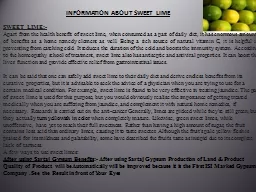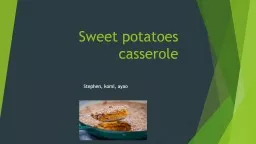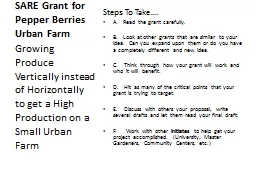PDF-Sweet Potatoes in the Garden Jeran Farley and Dan Drost Summary Sweet potatoes Ipomoea
Author : tawny-fly | Published Date : 2014-11-16
It is a warm season crop that grows best in long hot growing seasons There are many varieties to choose from with shorter maturity varieties suited to cooler climates
Presentation Embed Code
Download Presentation
Download Presentation The PPT/PDF document "Sweet Potatoes in the Garden Jeran Farle..." is the property of its rightful owner. Permission is granted to download and print the materials on this website for personal, non-commercial use only, and to display it on your personal computer provided you do not modify the materials and that you retain all copyright notices contained in the materials. By downloading content from our website, you accept the terms of this agreement.
Sweet Potatoes in the Garden Jeran Farley and Dan Drost Summary Sweet potatoes Ipomoea: Transcript
Download Rules Of Document
"Sweet Potatoes in the Garden Jeran Farley and Dan Drost Summary Sweet potatoes Ipomoea"The content belongs to its owner. You may download and print it for personal use, without modification, and keep all copyright notices. By downloading, you agree to these terms.
Related Documents














